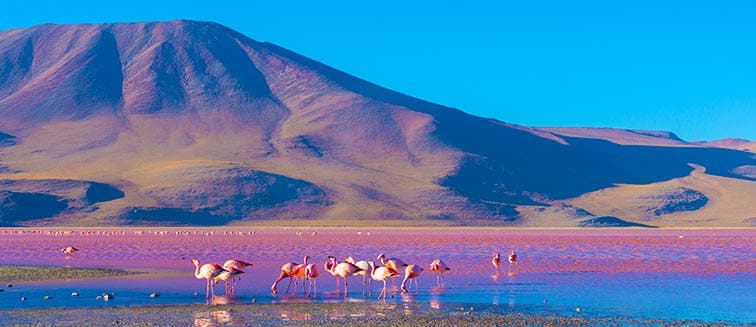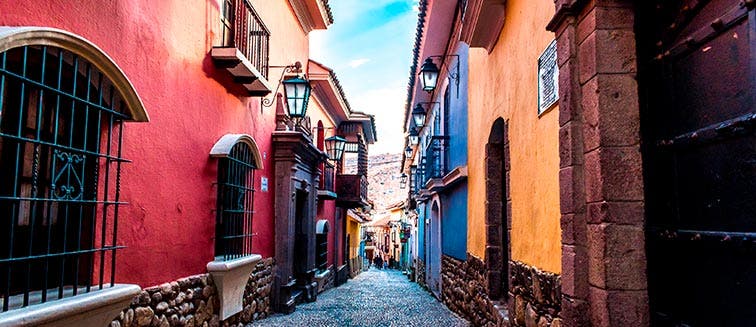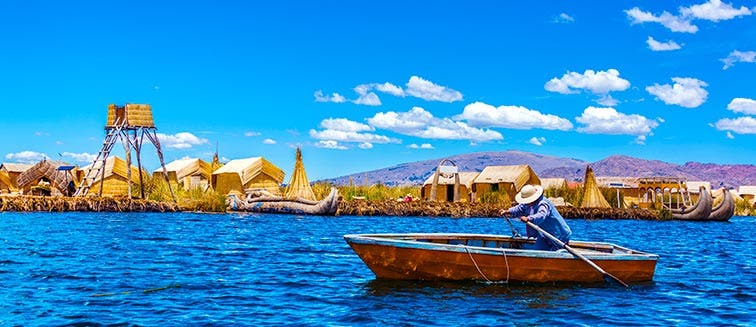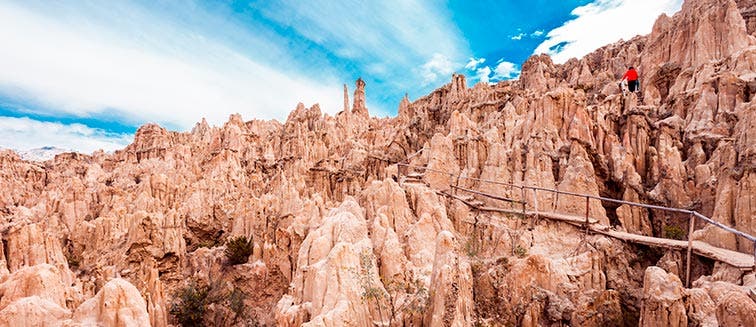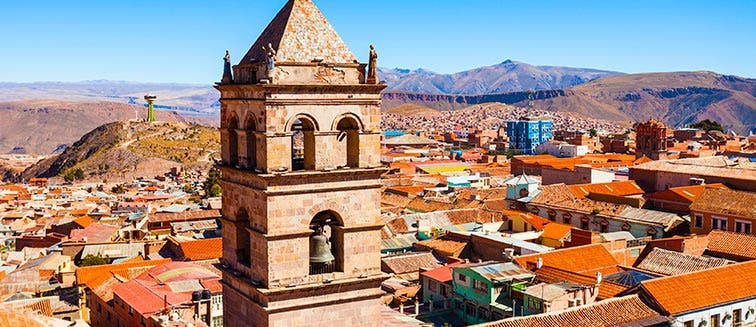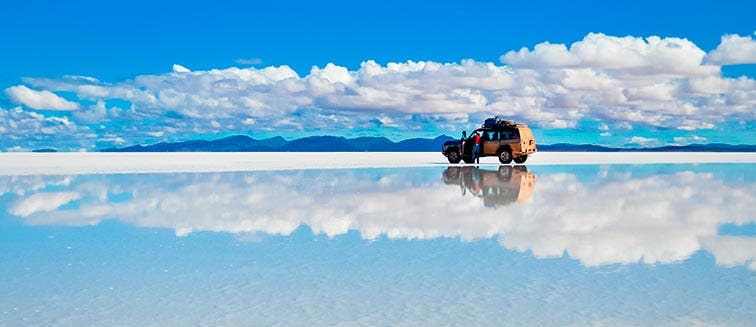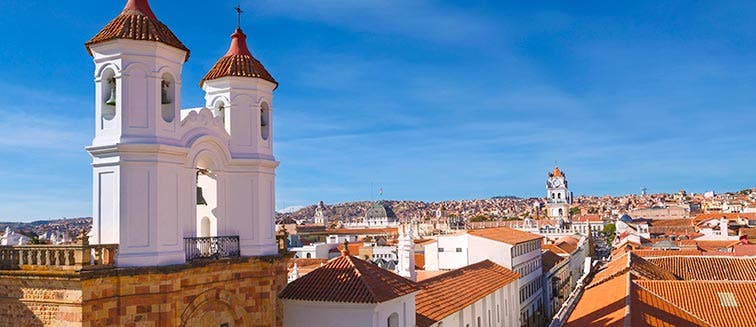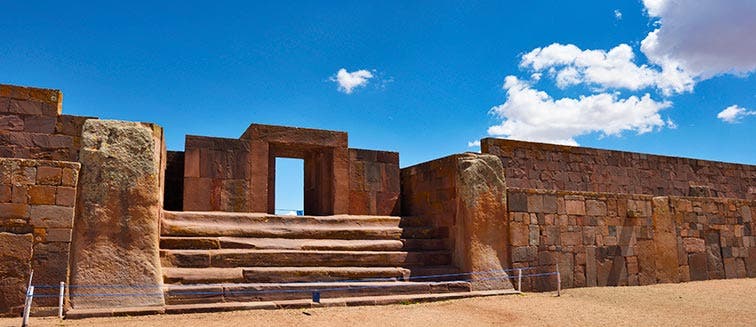Africa
Americas
Asia
Europe
Oceania
By Season
By Interest
By Group
Call us for free now
Book with an expert for free:
+44 20 8068 3176
Prefer us to call you? Drop your number in the box:
24 hours a day, 7 days a week
What to see in Bolivia
Eduardo Avaroa
Tourist attractions Eduardo Avaroa
Located south of the Salar de Uyuni and north of the Atacama Desert of Chile, at an altitude of between 4200 and 6000 metres at some points, and set between the heights of the Andes, this is the most famous protected area in Bolivia. It is home to volcanoes, geysers, deserts, coloured lagoons and hot springs in a spectacular desert landscape.
Home to 23 species of mammals and 80 species of birds such as flamingos, pumas, vicuñas, vizcachas, Andean foxes, ostriches and llamas. The 190 species of plants and trees have had to adapt to the extreme environment of low temperatures and dryness and a lack of fresh water. It is an inhospitable place but is nonetheless full of beauty.
Laguna Blanca y Laguna Verde
The Laguna Blanca & Laguna Verde are connected by a narrow strait. The colours of the waters are determined by the minerals within them. In the White Lagoon, the whitish color is due to the high concentration of different minerals. Arsenic and lead confer the emerald color of the Green Lagoon and impede life due to its toxicity. They extend to the foot of the Licancabur volcano, which stands at 5868 metres in height.
Siloli Desert and Salvador Dalí Desert
Rock formations of up to 10 metres high are displayed on a vast brown and desolate plain and have been shaped by the wind over the centuries. Siloli is one of the aridest deserts in the world and its main attraction is the "Stone Tree". In the Dalí Desert, the landscape of rocks look like true works of art, and remind us of the surrealism that the painter embodied in his works, hence the name given to the strange and wonderful desert. Lovers of photography and art should be sure to visit this desert on a trip to Bolivia.
Laguna salada de los Polques
Whitish on the banks due crust of borax, inside the Laguna Salada de Los Polques you can see some the thermal energy bubbling beneath the surface. It has a conditioned area for bathing, composed of a small pool of thermal waters that is filled with water emerging from the subsoil at a comfortable 37 degrees celsius.
"Sun of Tomorrow" Fumaroles
At 5000 metres above sea level, the so called ‘Sun of Tomorrow’ is a geothermal field of intense volcanic activity. Fumaroles, which are openings near a volcano, through which hot sulphurous gases emerge, can be seen emitting gases, and boiling pools of water of different colours depending on the minerals they contain.
Coloured Lagoon
‘Colorada’ or Coloured Lagoon owes its vibrant appearance to the pigment of microscopic algae that live in its waters. The flamingos feed on them and nest in the lagoon. It is one of the few places in the world inhabited by three different species of flamingos: Chilean, with pink, orange and white plumage; Andean, deep red; and James, smaller and with a black and yellow beak.
OUR BEST TRIPS TO EDUARDO AVAROA
YOU ALSO LIKE
Argentina
10 Trips
Bolivia
1 Trips
Brazil
5 Trips
Chile
8 Trips
Colombia
3 Trips
Ecuador
7 Trips
Peru
11 Trips
Panama
1 Trips
Costa Rica
4 Trips
Guatemala
2 Trips
Belize
1 Trips
Honduras
Notify me when available
Mexico
2 Trips
United States
1 Trips
Canada
Notify me when available
Dominican Republic
2 Trips
Bahamas
Notify me when available


































